[Big read] Post-pandemic tourism: Can six pandas revitalise Hong Kong?
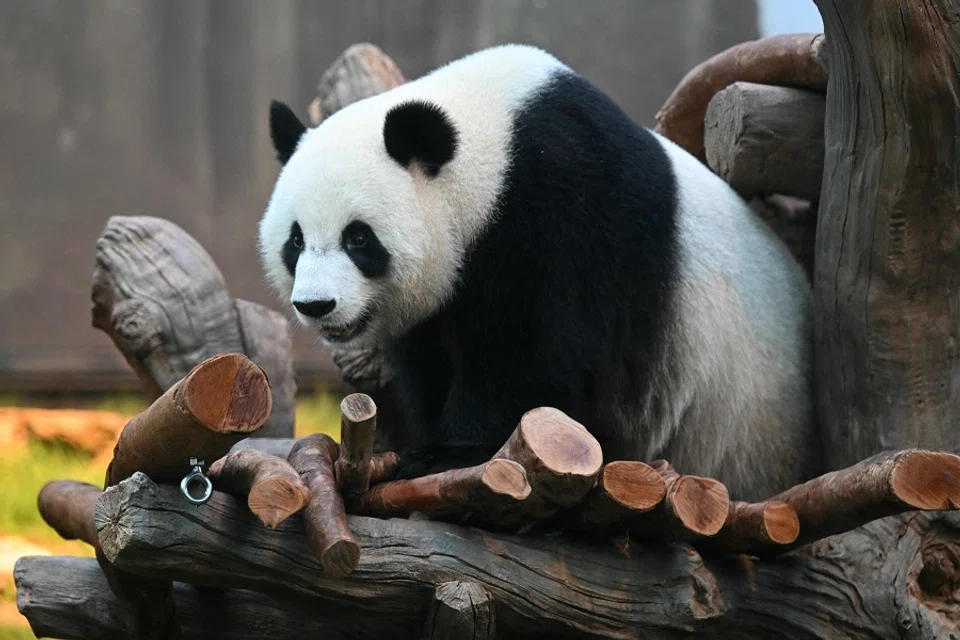
Hong Kong’s tourism industry has been one of the pillars of its economy, and the recent gift of two pandas from the mainland Chinese government has brought the total number of pandas in Hong Kong to six, along with a surge in panda fever. Lianhe Zaobao’s journalist Tai Hing Shing dives into the question of whether Hong Kong can leverage the pull of pandas.
Hong Kong’s Ocean Park, home to marine and land animals, amusement rides, and large-scale performances, experienced a “panda-monium” on 8 December. Half an hour before the 10am opening, five or six queues stretched 200 metres, filled with visitors sporting panda headgear and clutching plushies. They eagerly awaited the debut of pandas An An and Ke Ke, a gift from the Chinese government.
After over two months of quarantine, the pandas were finally making their debut. As the gates opened, crowds of panda lovers rushed to the Sichuan Treasures section. The area quickly became overcrowded, leading to crowd control measures: visitors were issued timed entry tickets and admitted in batches of about 100 for 10-minute visits. By noon, the timed tickets issued were for entry at 4:30 pm, but most people said they did not mind the long wai, as long as they had a chance to see the pandas.
Besides local residents, many international tourists were also there. US tourist Anthony was in Hong Kong with his girlfriend, and it was his first time seeing pandas. His girlfriend loved pandas, and they were eager to see An An and Ke Ke on their first day in public.
Anthony said, “Having pandas in Hong Kong will probably attract more foreign visitors to spend money in Hong Kong because there are few opportunities to see pandas in the US.”

After seeing the pandas, Anthony said that he has been won over by how adorable they are, and intends to revisit them with his girlfriend before they leave Hong Kong.
More and more pandas in Hong Kong
Hong Kong’s connection with pandas goes back to 1997, when the Chinese government gifted it the first pair named An An and Jia Jia, to celebrate its return to China — they were officially introduced to the Hong Kong public in 1999. The pair grew up and spent many years in Ocean Park, and brought a lot of happy memories to Hong Kongers before they died in 2016 and 2022.
In 2007, on the 10th anniversary of Hong Kong’s handover, the central government gifted a second pair of pandas, Ying Ying and Le Le, to Hong Kong. Having lived in Hong Kong for nearly two decades, they have become treasures for the people of Hong Kong.
This year marks the 27th anniversary of the HKSAR, and Beijing has sent yet another pair of pandas, An An and Ke Ke. With the successful birth of fraternal twins to Ying Ying and Le Le in August, the panda family in Hong Kong is now six members strong.
Many in its political and business circles feel that the authorities should ride on the panda craze of the past six months to develop a “panda economy”, to boost Hong Kong’s tourism sector and economy.
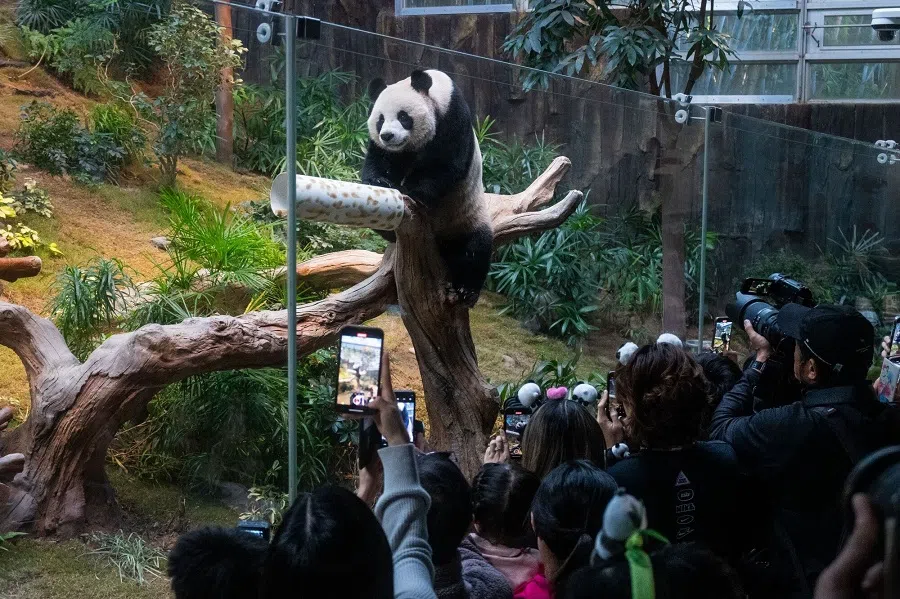
Over the past few months, the four new pandas have captivated the public with their adorable looks, sparking an unrivalled panda craze. According to a telephone survey of 720 people in September and October conducted by the Democratic Alliance for the Betterment and Progress of Hong Kong (DAB), more than half of respondents wanted to go to Ocean Park to see the pandas, and hoped the park would launch panda-themed merchandise. Nearly 60% of respondents also said they would recommend friends or relatives visiting from abroad to see the pandas at Ocean Park.
“Panda economy” a tourism boost?
Tourism is a key driver of Hong Kong’s economy, but the industry has been struggling in recent years due to the impact of the Covid-19 pandemic, while the government’s post-pandemic efforts to revitalise the sector have not shown significant results.
The latest report in November from the Legislative Council (LegCo) Secretariat revealed that the number of visitors to Hong Kong had rebounded to 34 million in 2023, but this was still only half of the peak in 2018. In the first nine months of this year, Hong Kong welcomed 32.6 million visitors, an increase of 40% over the same period in 2023 but still only 70% of the corresponding period in 2018.
Now, Hong Kong is at a crossroads, as traditional industries struggle while nascent industries have yet to take off. Many in its political and business circles feel that the authorities should ride on the panda craze of the past six months to develop a “panda economy”, to boost Hong Kong’s tourism sector and economy.
Targeting visitors from southern China
The Hong Kong Chief Executive’s latest Policy Address in October recognised the idea of panda tourism, and aimed to promote panda-centred ecological tourism as a key part of Hong Kong’s branding.
Over the past few months, the “panda economy” has been a buzzword in Hong Kong, with the tourism board conducting various publicity activities both locally and overseas to promote panda tourism. At the same time, a number of organisations have also organised many panda-themed events, such as a large-scale exhibition involving some 2,500 panda sculptures placed at tourist hotspots for people to take photos.
A series of events for the outdoor PANDA GO! FEST was also held at the Hong Kong Cultural Centre piazza, with interactive performances, a market, an art exhibition, and spaces for visitors to engage with giant pandas. A massive 10-square-metre panda art installation was also set up in Victoria Harbour. The event is expected to draw over a million visitors.
“Other provinces in mainland China also have pandas, but for people in the Greater Bay Area, it’s not cheap to fly to Chengdu in Sichuan to see them.” - Jack Cheung Ki-tang, director, CTS HK Metropark Hotels Management
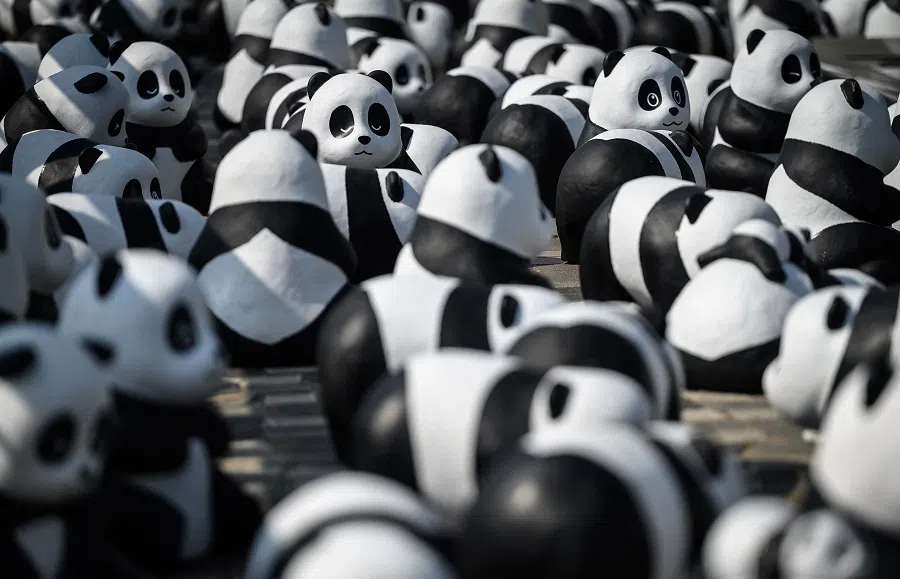
Many businesses in Hong Kong are also launching panda-themed products. Jack Cheung Ki-tang, director of CTS HK Metropark Hotels Management, told Lianhe Zaobao that it plans to offer panda-themed hotel rooms featuring bedding and decorations with panda designs during the Christmas period.
Cheung believes there is a large fan base for giant pandas in mainland China and expects the event to attract many visitors. He said: “Other provinces in mainland China also have pandas, but for people in the Greater Bay Area, it’s not cheap to fly to Chengdu in Sichuan to see them. Coming to Hong Kong by high-speed rail is much more affordable. So, we believe promoting the ‘panda economy’ will help Hong Kong’s tourism industry.”
On major Hong Kong travel websites, a number of panda-themed tour packages are available at prices ranging from HK$400 to HK$599 (US$51 to US$77). Third-party travel platforms in mainland China have also added panda-focused itineraries to their Hong Kong tours. Many Hong Kong hotels with panda-themed rooms have seen prices reach between HK$900 and HK$2,000 per night, and are already fully booked until January 2025.
According to Sing Tao Daily, a project assistant manager from a travel agency in Guangxi said that for visitors from Guangdong and Guangxi, travelling to Hong Kong to see pandas is more cost-effective than going to Sichuan. She said: “One only has to take a couple of extra days off in addition to the weekend break to join a four days three nights high-speed rail tour to Hong Kong. There’s no need to take a plane and it’s much cheaper, and many Guangxi tourists choose to go to Hong Kong.”
Panda-themed products to boost sales
Recently, the panda effect has spread from Ocean Park to the market at large, with some stores in the vicinity of Ocean Park capitalising on business opportunities by launching panda-themed products to improve sales.
The panda marketing blitz has also led to sensory fatigue.
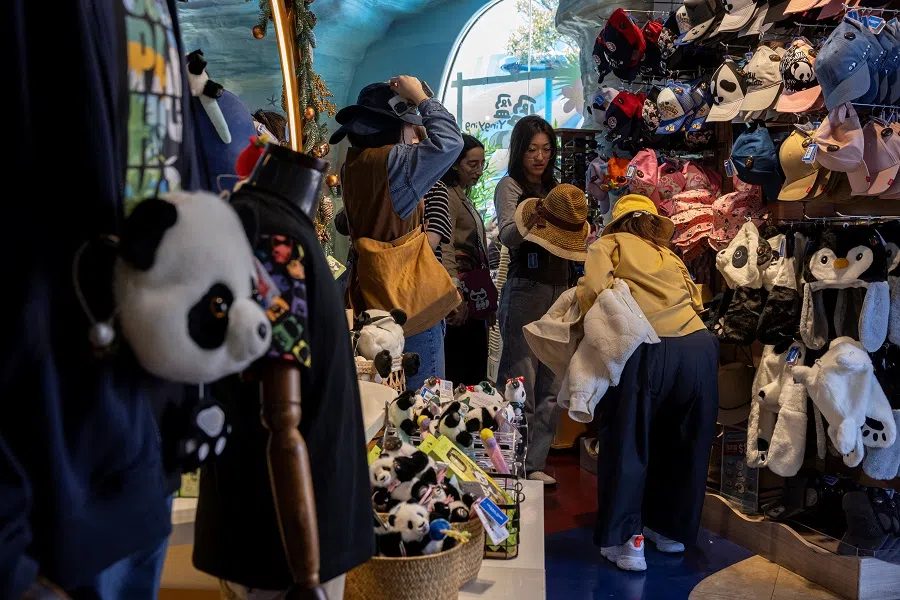
Hong Kong bakery Dai Kee has seen a surge in orders for its panda-themed pastries, launched to celebrate the birth of panda twins. According to Ta Kung Pao newspaper, the eight-year-old bakery has been constantly restocking and fulfilling pre-orders since the pastries’ release.
Simon Wong, President of the Hong Kong Federation of Restaurants and Related Trades, noted that many restaurants and eateries in Hong Kong are incorporating panda-themed décor, promoting Sichuanese cuisine, and cooperating with travel operators to appeal to visitors. He added, “With the multiple-entry scheme, many more mainland Chinese tourists are expected, so there is a need to prepare in advance.”
“Fake” pandas needed
The panda marketing blitz has also led to sensory fatigue. A LegCo member, speaking anonymously to local media, noted the recent trend of panda plushies and souvenirs being distributed at events, even those unrelated to pandas. The legislator criticised the questionable quality of some items, pointing out that they barely resemble pandas and do little to promote the animals themselves.
In an interview with Lianhe Zaobao, Hong Kong economist Simon Lee said giant pandas are not unique to Hong Kong, and it could be difficult for Ocean Park to bank on live pandas to attract visitors. While acknowledging the appeal of Hong Kong’s six pandas, he suggested maximising their economic impact by supplementing them with equally attractive “fake panda” offerings.
Lee said: “The 20 most-visited theme parks worldwide in 2023 were mostly by Disney and Universal Studios. Their common thread? They’re driven by animated, not live-action, movies.”
Lee explained that “fake” creatures are usually more appealing than live animals, for instance cartoon characters such as Mickey Mouse, Doraemon, and Hello Kitty...
Reaching out to international visitors
Lee explained that “fake” creatures are usually more appealing than live animals, for instance cartoon characters such as Mickey Mouse, Doraemon, and Hello Kitty, which can go with merchandise such as plushies and souvenirs, and even provide photo opportunities to create significant revenue streams. He suggested that Hong Kong could consider involving celebrities in creating content, such as animated films or romantic movies centred around pandas.
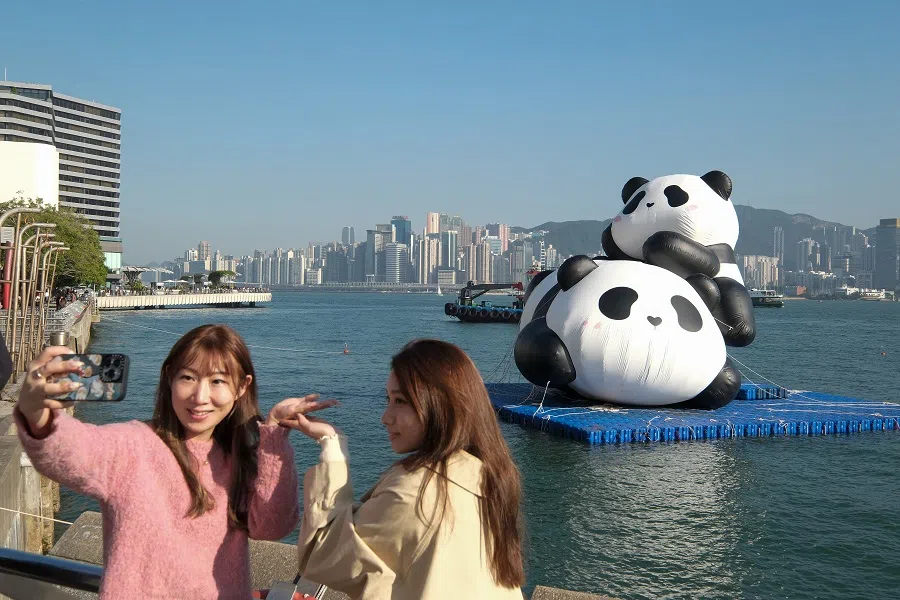
Henry Choi, a lecturer at the Chinese University of Hong Kong’s Office of University General Education, noted in an interview that giant pandas have been a fixture at Ocean Park since 1999, and they have left a strong impression on visitors. This provides a solid foundation for Hong Kong to leverage the panda branding effect.
He praised the recent panda exhibitions across various districts for bringing pandas into local communities. However, Choi emphasised that for Hong Kong’s panda image to reach an international audience, successful film projects and panda-related intellectual property (IP) are necessary — developments that will take time.
He suggested that if Hong Kong wants to create cultural IP for its “panda economy”, it can tap on child psychology and turn the pandas into cartoons. “Transforming An An and Ke Ke into something akin to the long-popular children’s animated series ‘Pleasant Goat and Big Big Wolf’ could support panda-related economic activities and merchandise, boosting Hong Kong’s tourism industry.”
Previously, Hong Kong’s tourism industry has thrived on attractions like Disneyland, Ocean Park, and the luxury goods market. However, Choi observed that in the post-pandemic era, tourists have become accustomed to budget travel.
For long-term success, Hong Kong’s tourism sector must become more skilled at leveraging cultural IP to create an integrated tourism and entertainment ecosystem. This should include dining, immersive experiences, and consumption opportunities to offer visitors something new each time they visit Hong Kong. Only with such innovation will the industry continue to prosper and thrive.
This article was first published in Lianhe Zaobao as “六大熊猫聚港 卖萌力挺经济”.





